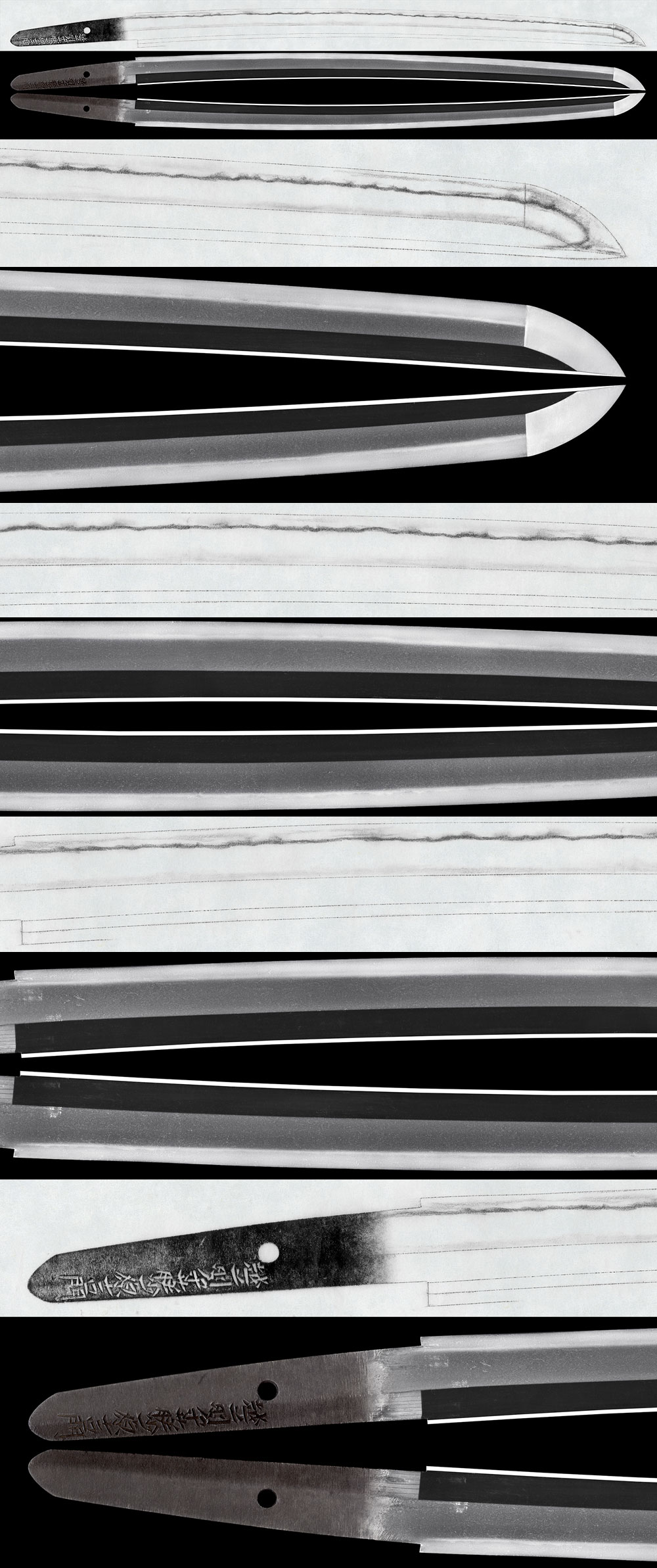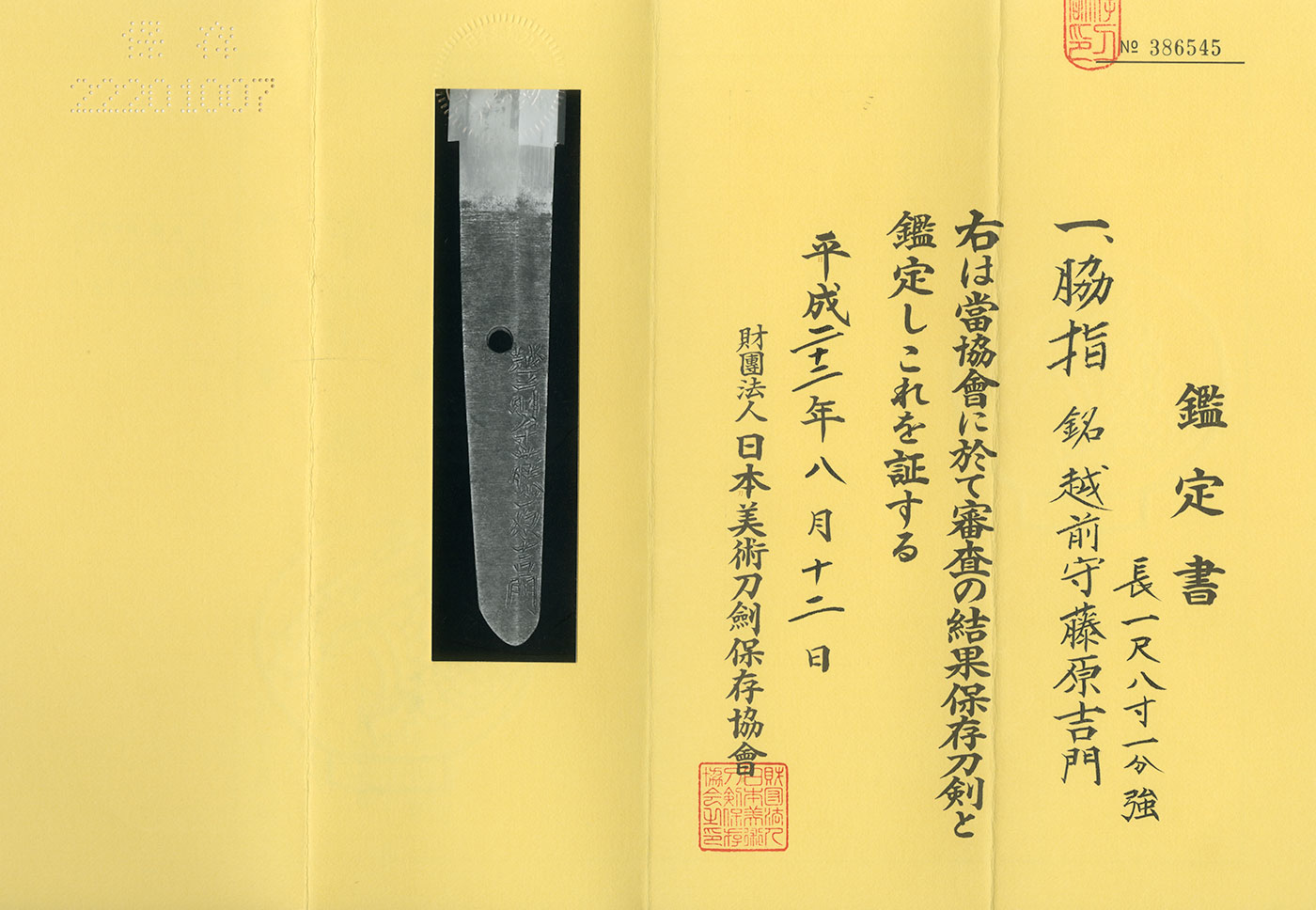Ordering number: 23558
Wakizashi in Shirasaya with Koshirae(NBTHK Hozon Token)(Consignment Sale)
Signature: Echizen Kami Fujiwara Yoshikado (Bokuden)
越前守藤原吉門 (卜伝)
Shinto: Excellent Work: Jōsaku (Highly Superior): Hitachi
In our company, we categorize the quality of the blade based on the skills of the swordsmith:
Jōjō-saku (Excellent), Jōsaku (Highly Superior), Jōsaku (Superior), and
Futsū-saku (Average). This blade is categorized as Jōsaku, indicating it is a highly superior work.
Polished.
Habaki : Gold foiled single Habaki.
Blade Length: 1 shaku 8 sun 1 bu 0 rin (54.85 cm) / 21.58 inches
Curvature: 3 bu 2 rin (0.97 cm) / 0.38 inches
Peg holes: 1
Base Width: 3.14 cm / 1.24 inches
Tip Width: 2.32 cm / 0.91 inches
Thickness at Base: 0.68 cm / 0.27 inches
Weight: 625 grams
Era: Edo period, around Enpō 1673
Shape: The blade has a wide and solid structure with a slightly shallow curvature and a standard tip.
Jigane: The skin texture is finely compacted, forming an excellent wood grain pattern.
Hamon: Suguha hamon tempering with well-defined nie (crystalline structures)
and a distinctive midare pattern. The bōshi (temper pattern at the tip) is irregular and gracefully returns.
Characteristics: This blade retains some shinsa (sharpness) and represents a healthy
appearance to this day. Blades with a well-executed straight temper are generally
praised for their quality. This blade is a fine example of such work. It is a blade that could
be accompanied by the lyrics of a famous folk song: “At the base of the Tone River, let it
rest…” Yoshikado was an accomplished swordsmith associated with Mito Mitsukuni, and
this blade should be acquired.
Mountings:
Tsuba : Circular iron tsuba with engravings of figures and landscapes.
Menuki : High relief chrysanthemum motif with color enamel in gold.
Fuchi Kashira : Unsigned (Mitsunaka).
Saya : Saya with a textured finish resembling stone pattern.
From Aoi Art: Yoshimon was a disciple of Ōmura Katsu and initially used the name
Kawamura Ichisaiemon. He later adopted the names Echizen-no-kami Yoshikado and
Musashi-no-kami Yoshikado before becoming a trusted swordsmith for Mito Yorifusa. He
resided in Mito from around February of the 12th year of Kanbun and was recognized as
a shichi-nin fujite (skilled artisan with seven retainers). Around the 4th year of Enpō, he
took on the name Bantō Tarō Nyūdō Norikata.
NBTHK Hozon Token
Aoi Art estimation paper
Whole Oshigata was made by Ayaka Tsuruta.
*Please note: The price does not include shipping fees.





